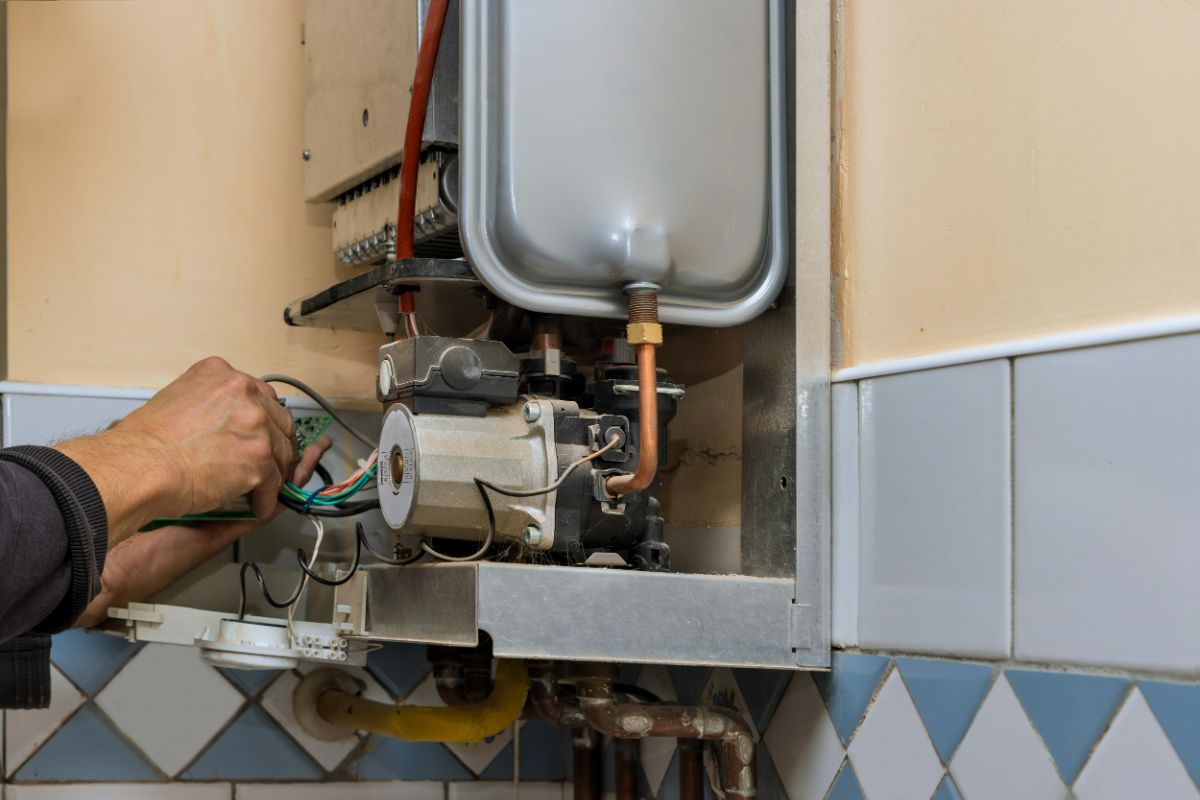Ensuring Longevity of Your Home's Hot Water System: Maintenance Advice
Ensuring Longevity of Your Home's Hot Water System: Maintenance Advice
Blog Article
We have unearthed this great article pertaining to What Kind of Maintenance Do Water Heaters Need? directly below on the internet and accepted it made sense to quickly share it with you on this site.

Warm water is important for day-to-day comfort, whether it's for a refreshing shower or cleaning recipes. To ensure your warm water system runs efficiently and lasts longer, normal maintenance is essential. This post provides useful pointers and insights on exactly how to keep your home's hot water system to prevent interruptions and expensive repairs.
Introduction
Preserving your home's warm water system might seem overwhelming, but with a couple of straightforward steps, you can ensure it runs efficiently for several years ahead. This guide covers everything from comprehending your warm water system to do it yourself maintenance tips and recognizing when to hire expert aid.
Importance of Maintaining Your Hot Water System
Routine maintenance not just extends the life-span of your warm water system but likewise guarantees it operates efficiently. Ignoring upkeep can cause lowered performance, higher energy expenses, and even premature failure of the system.
Indications Your Warm Water System Requirements Upkeep
Understanding when your warm water system requires focus can prevent major issues. Look out for signs such as inconsistent water temperature level, weird sounds from the heating system, or corroded water.
Purging the Hot Water Heater
Purging your water heater eliminates sediment buildup, improving performance and lengthening its life.
Monitoring and Replacing Anode Rods
Anode rods protect against deterioration inside the container. Checking and replacing them when worn out is essential.
Complex Issues Calling For Specialist Assistance
Examples include significant leakages, electrical problems, or if your water heater is regularly underperforming.
Routine Specialist Upkeep Advantages
Professional upkeep can consist of thorough examinations, tune-ups, and making sure compliance with safety criteria.
Checking and Adjusting Temperature Level Settings
Readjusting the temperature settings ensures optimum performance and safety.
Do It Yourself Tips for Upkeep
You can carry out numerous upkeep tasks on your own to keep your warm water system in leading problem.
Looking for Leakages
Consistently examine pipes and links for leakages, as these can cause water damage and greater bills.
Recognizing Your Hot Water System
Before diving right into maintenance tasks, it's handy to comprehend the basic components of your hot water system. Generally, this consists of the water heater itself, pipes, anode rods, and temperature level controls.
Month-to-month Maintenance Tasks
Normal regular monthly checks can help catch small issues prior to they intensify.
Examining Pressure Alleviation Valves
Examining the pressure relief valve ensures it operates properly and stops too much stress accumulation.
Shielding Pipes
Protecting hot water pipelines reduces warm loss and can save power.
When to Call a Professional
While DIY maintenance is advantageous, some issues call for specialist competence.
Final thought
Regular maintenance of your home's warm water system is essential for performance, durability, and cost financial savings. By complying with these tips and knowing when to look for specialist assistance, you can make sure a trusted supply of hot water without unanticipated interruptions.
How to Maintain an Instant Hot Water Heater
Before tinkering with your hot water heater, make sure that it’s not powered on. You also have to turn off the main circuit breaker and shut off the main gas line to prevent accidents. Also turn off the water valves connected to your unit to prevent water from flowing into and out of the appliance. 2. When you’re done, you have to detach the purge valves’ caps. These look like the letter “T†and are situated on either side of the water valves. Doing so will release any pressure that has accumulated inside the valves while at the same time avoid hot water from shooting out and burning your skin. 3. When the purge valves’ caps are removed, you have to connect your hosing lines to the valves. Your unit should have come with three hoses but if it didn’t, you can purchase these things from any hardware or home repair shops. You can also get them from retail stores that sell water heating systems. Read the user’s manual and follow it to complete this task properly. When the hosing lines are connected, open the purge port’s valves. 4. You should never use harsh chemical cleaners or solutions when cleaning your unit. Make use of white vinegar instead. It should be undiluted and you’ll probably use about 2 gallons. 5. Now flush your water heater. This task should probably take about 40 minutes. We can’t give you specific directions for this because the procedure is carried out depending on the type, model and brand of your heater. With that being said, refer to the user’s manual. 6. When you’re done draining the unit, you have to turn off the purge port valves again. Remove the hosing lines that you earlier installed on each of the water valves. Put the valve caps (purge port) back in their respective places and be very careful so as not to damage the rubber discs that are found inside these caps. 7. Now that everything’s back in place, check your user’s manual again to find out how to reactivate your water heating system. 8. Once it is working, turn one of your hot water faucets on just to let air pass through the heater’s water supply pipes. Leave the tap on until water flows smoothly out of it. https://www.orrplumbing.com/blog/2014/september/how-to-maintain-an-instant-hot-water-heater/

As a serious person who reads about How to Maintain Your Water Heater & Prolong its Life, I assumed sharing that short article was a smart idea. Loved our review? Please quickly share it. Help another person find it. I thank you for your readership.
Click On This Link Report this page